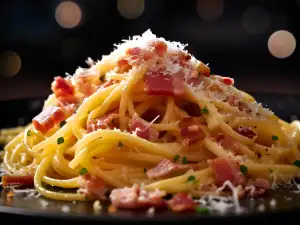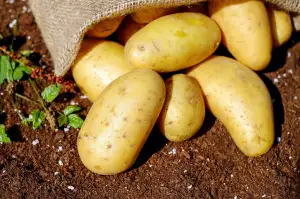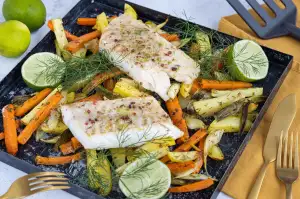Fresh and Flavorful: Mastering the Art of Boiling Corn on the Cob

Boiling corn on the cob is a classic and simple method of cooking that brings out the natural sweetness and flavor of this beloved summer vegetable. Whether you're hosting a backyard barbecue or simply craving a taste of nostalgia, mastering the art of boiling corn on the cob will ensure that each bite is fresh, flavorful, and satisfying. In this article, we will guide you through step-by-step instructions for boiling corn on the cob, share tips for selecting the freshest ears, and offer suggestions for serving and enjoying this delicious treat. Get ready to celebrate freshness in every mouthwatering bite!
Step-by-step instructions for boiling corn on the cob
1. Fill a large pot with water and bring it to a boil.
2. While waiting for the water to boil, husk the corn by removing the outer leaves and silky threads.
3. Once the water is boiling, carefully place the corn into the pot.
4. Allow the corn to cook for about 5-7 minutes, or until it becomes tender.
5. Avoid overcooking, as this can result in mushy corn.
6. Use tongs or a slotted spoon to remove the cooked corn from the pot.
7. Let it cool for a few minutes before serving.
Remember, timing may vary depending on the size and freshness of the corn. Enjoy your freshly boiled corn on the cob!
Tips for selecting fresh corn
When it comes to selecting fresh corn, there are a few key tips to keep in mind. First and foremost, look for corn with bright green husks that are tightly wrapped around the cob. The husks should feel slightly damp and have a fresh, earthy scent. Avoid corn with dry or brown husks, as this may indicate that the corn is past its prime.
Another important factor to consider is the silk. Gently peel back a small portion of the husk to check the silk. It should be moist and light golden in color. If the silk is dry or dark in color, it might be a sign that the corn is not as fresh.
Size can also be an indicator of freshness. Look for ears of corn that are plump and filled out from top to bottom. Avoid any cobs that feel lightweight or have gaps between the kernels.
Lastly, give the kernels a gentle press with your thumb. They should feel firm and plump, indicating that they are juicy and ripe.
By following these tips, you'll be sure to select the freshest corn for boiling on the cob, resulting in a deliciously flavorful dish that celebrates freshness in every bite.
Preparing the corn for boiling
To prepare the corn for boiling, start by removing the husks and silk. Gently peel back the husks, taking care not to tear them, and remove all the silk strands. Rinse the corn under cold water to ensure it is clean.
Next, you can choose to leave the husks on or remove them completely. Leaving the husks on can help retain moisture and add a smoky flavor to the corn. However, if you prefer a more traditional look and easier eating experience, you can remove the husks entirely.
If you decide to remove the husks, use a sharp knife to cut off any excess stalk at the end of each cob. This will make it easier to handle and fit in your pot. If you're keeping the husks on, simply trim any excess silk that may be sticking out.
Now that your corn is prepped and ready, it's time to move on to boiling. Remember, fresh corn is always best for boiling as it ensures maximum flavor and tenderness in every bite. So let's get cooking!
Boiling the corn on the cob
Boiling the corn on the cob is a simple and effective way to bring out its natural sweetness and tenderness. Here's how to do it:
1. Fill a large pot with water, leaving enough room for the corn to be fully submerged.
2. Add salt to the water. This will enhance the flavor of the corn as it boils.
3. Bring the water to a rolling boil over high heat.
4. Carefully place the corn cobs into the boiling water, making sure they are fully submerged.
5. Reduce the heat to medium-low and cover the pot with a lid.
6. Allow the corn to simmer for about 8-10 minutes, or until it becomes tender when pierced with a fork.
7. Avoid overcooking, as this can result in mushy corn.
Remember, cooking time may vary depending on the size and freshness of the corn. It's always best to check for doneness by testing a kernel before removing all of them from the pot.
Boiling is an excellent method for preserving both flavor and nutrients in fresh corn on the cob. So go ahead and give it a try – you'll be rewarded with perfectly cooked, deliciously tender corn that bursts with natural sweetness!
Testing the doneness of the corn
Testing the doneness of the corn is crucial to ensure that it is cooked perfectly. To test if the corn is done, carefully remove a kernel from the cob using tongs or a fork. Press your fingernail into the kernel; if it releases milky liquid, then the corn is cooked. If the liquid is clear, continue boiling for a few more minutes and test again. Remember not to overcook the corn as it can become mushy and lose its natural sweetness.
Serving and enjoying boiled corn on the cob
Serving and enjoying boiled corn on the cob is a delightful experience that celebrates the freshness and natural sweetness of this beloved summer vegetable. Once the corn is perfectly cooked, it's time to bring it to the table and savor every flavorful bite.
To serve the boiled corn on the cob, you can simply place them on a platter or individual plates. Some people like to brush melted butter over the hot corn, enhancing its rich taste. You can also sprinkle some salt and pepper for added flavor.
For those who prefer a bit of tanginess, a squeeze of fresh lime juice or a sprinkle of chili powder can take your boiled corn to another level. Additionally, you can experiment with different seasonings such as garlic powder, paprika, or grated Parmesan cheese for an extra burst of flavor.
Corn on the cob pairs well with many dishes and cuisines. It is often served alongside grilled meats, seafood, or as part of a vibrant summer salad. The versatility of boiled corn allows you to incorporate it into various recipes like soups, stews, and even salsas.
As you sink your teeth into the tender kernels bursting with juiciness, take a moment to appreciate the simplicity and beauty of this humble vegetable. The combination of its natural sweetness and the slight crunch make each bite truly satisfying.
Whether enjoyed at a backyard barbecue or as part of a family meal, boiled corn on the cob brings people together around delicious food. So gather your loved ones, share stories and laughter while relishing this seasonal delight.
In conclusion, serving and enjoying boiled corn on the cob is an opportunity to celebrate freshness in every mouthwatering bite. From its vibrant appearance to its irresistible taste, this simple yet versatile dish has become an iconic symbol of summertime joy. So go ahead, indulge in this classic favorite and let its flavors transport you to sunny days filled with warmth and happiness.
Boiling corn on the cob is a simple yet delightful way to enjoy the natural sweetness and crunchiness of this summer staple. By following these step-by-step instructions and selecting the freshest corn available, you can master the art of boiling corn on the cob.
The key to achieving perfection lies in cooking the corn just long enough to bring out its vibrant flavors without making it mushy. Remember to test for doneness by piercing a kernel with a fork – it should be tender but still have a slight bite.
Serving boiled corn on the cob is an occasion to celebrate freshness in every bite. Whether you choose to slather it with butter, sprinkle it with salt, or experiment with different seasonings, each mouthful will transport you to a sunny farm where nature's bounty is at its finest.
So gather your loved ones around the table, take a moment to appreciate the simplicity of this dish, and savor each juicy kernel. Let us celebrate the beauty of fresh ingredients and embrace the joy that comes from farm-to-fork cooking. May every meal be a reminder of nature's abundance and our connection to it.
Published: 24. 11. 2023
Category: Food



